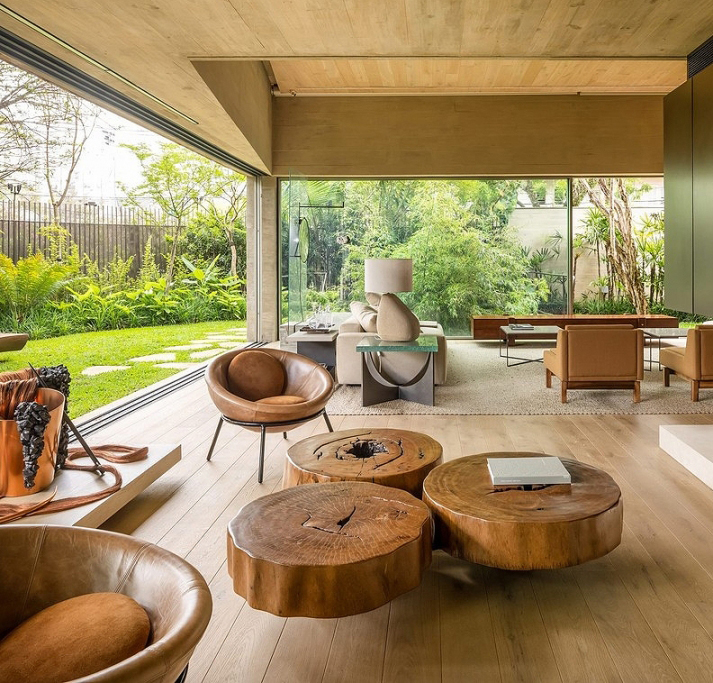
With sustainability being a top priority these days, eco-conscious homeowners are seeking materials that reduce environmental impact, offer durability and embrace an aesthetic that promotes comfort and well-being. Enter: the practice of biophilic architecture. But what exactly is biophilia? How does it translate to architecture and design?
Biophilia is defined as ‘the urge to affiliate with other forms of life and nature’. Originating from Greek, it translates literally as ‘love of life’. In a design context, the concept of biophilia refers to architecture that mimics natural environments to enhance and improve well-being. While this concept has been around for a long time, its popularity has grown in recent years as we as a society begin to prioritize mental health and physical welfare.
However, biophilic design is about more than just plants. It’s about designing homes that breathe, that feel alive in the way they interact with their surroundings. Imagine sunlight pouring through oversized windows, warming floors made of natural bamboo. Or perhaps a vertical garden climbing a wall in your living room, its greenery softening the edges of modern furniture. This connection to nature isn’t just aesthetic; it’s practical. Materials like wood, stone and brick are being chosen not only for their appeal, but also for their sustainability. Builders and homeowners are looking for choices that are kind to the environment, favoring durability and renewability over the disposable trends of the past.
Studies show that exposure to nature — even in small doses — can reduce stress, enhance creativity and improve overall well-being. Biophilic design applies this principle by integrating natural elements into the home, creating environments that promote health and tranquility.
Some popular methods of incorporating this philosophy in a build are installing large windows and sliding glass doors, or constructing atriums which diminish the boundary between inside and out, filling spaces with natural light and views of the world beyond. For those who wish to add an even more dramatic flair to their living spaces, vertical gardens can be included to bring a literal breath of fresh air into interiors while acting as a dynamic design feature.
Natural materials such as bamboo flooring, wooden beams and stone accents provide tactile connections to nature. Brick, with its organic texture and earthy tones, is a premium choice for walls and flooring. The embrace of these materials also aligns with a broader focus on sustainability as homeowners seek materials that not only look good but also have a minimal environmental footprint. Bamboo, reclaimed wood and sustainably sourced bricks offer beauty and durability while supporting eco-friendly practices.
One thing is clear: 2025 isn’t just about how homes look. It’s about how they feel, and perhaps even more importantly, how they make us feel. It’s about stepping into a room with a sense of serenity, knowing that every element has been chosen with care. It’s about walking up to a house and seeing not just a structure but a story. And it’s about creating spaces that honor the world around us while embracing the lives we live within them. This is the future of design — a future that feels like home.